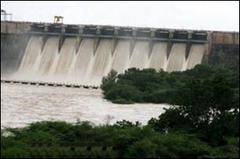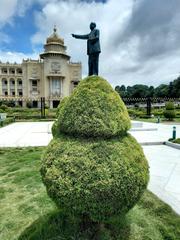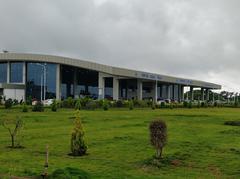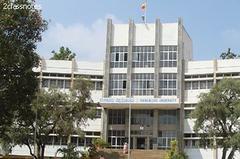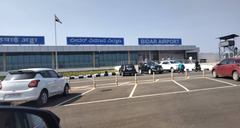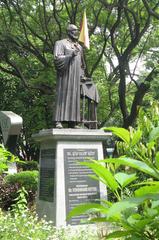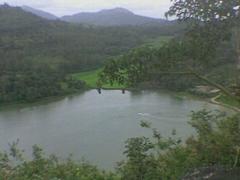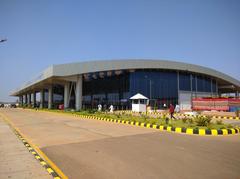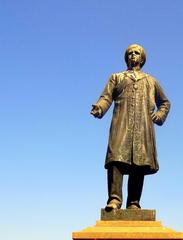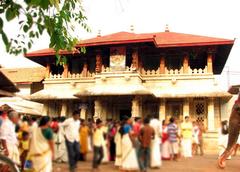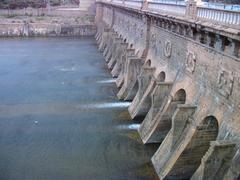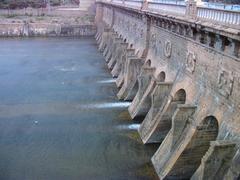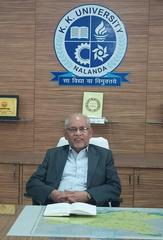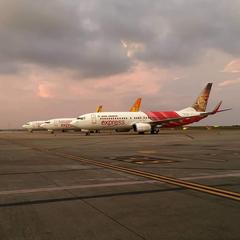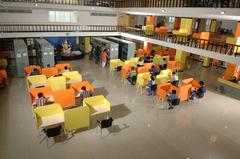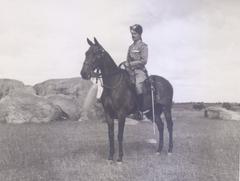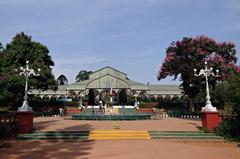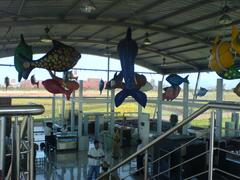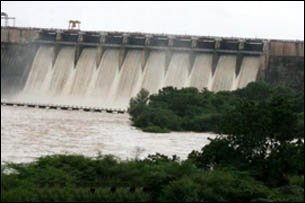
Raja Lakhamagowda Dam Visiting Hours, Tickets, and Travel Guide – Karnataka, India
Date: 15/06/2025
Introduction
Raja Lakhamagowda Dam—often referred to as Hidkal Dam—stands as a testament to North Karnataka’s engineering achievements, natural beauty, and rich cultural heritage. Located in the Belagavi district, this dam on the Ghataprabha River is a lifeline for irrigation, hydroelectric power, and drinking water, impacting the lives of hundreds of thousands. Since its completion in 1977, with subsequent expansions through 2009, the dam has transformed vast stretches of farmland, bolstered food security, and emerged as a favored destination for travelers seeking scenic vistas, birdwatching, and glimpses into the region’s history (Wikipedia, Techraj6).
This guide delivers comprehensive information on visiting hours, tickets, accessibility, travel tips, on-site experiences, and nearby attractions, ensuring you’re well-equipped to plan a memorable visit. Whether you’re a history buff, nature lover, or adventure seeker, Raja Lakhamagowda Dam offers a rewarding journey into the heart of Karnataka (Official Karnataka Tourism, Tripoto).
Table of Contents
- Dam Overview: History and Significance
- Essential Visitor Information
- On-Site Experience
- How to Reach Raja Lakhamagowda Dam
- Nearby Attractions
- Regional Insights: Culture, Cuisine, and More
- Adventure, Nature, & Local Markets
- Frequently Asked Questions
- Conclusion & Planning Resources
- References and External Links
Dam Overview: History and Significance
Raja Lakhamagowda Dam (Hidkal Dam) is a major earthen and masonry dam across the Ghataprabha River. Constructed as part of the Ghataprabha Irrigation Project, it has a reservoir spanning over 63 square kilometers, with a storage capacity of nearly 928 million cubic meters (Techraj6). Named after Raja Lakhamagouda Sardesai, a philanthropist and local leader, the dam honors his legacy in regional development (Wikipedia).
Socio-Economic and Environmental Impact
- Irrigation: Supports over 820,000 acres of farmland, transforming agriculture in Belagavi and Bagalkot districts.
- Hydroelectric Power: Supplies clean energy to local grids (OneIndia).
- Water Supply: Provides drinking water and helps maintain ecological balance.
- Cultural Hub: Venue for local festivals and recreational activities.
Essential Visitor Information
Visiting Hours & Entry
- Hours: Open daily from 6:00 AM to 6:00 PM.
- Entry Fee: No entry fee; boating (when available) may have nominal charges.
- Best Time to Visit: October to April offers the most pleasant weather and scenic reservoir views. Monsoon (June–September) enhances the landscape but may make access challenging (TravelSetu).
Accessibility
- By Road: About 40 km from Belagavi city; accessible via well-maintained state highways. KSRTC buses, private taxis, and rental cars are available.
- By Rail: Belagavi Railway Station is the nearest.
- By Air: Belagavi Airport is approximately 17 km from the city center.
On-Site Facilities
- Parking: Available near the dam, but limited during peak times.
- Restrooms: Basic facilities; bring personal hygiene supplies.
- Food: Occasional stalls and vendors; advisable to carry your own snacks and water.
On-Site Experience
Scenic Views & Photography
Enjoy panoramic vistas of the reservoir and the Western Ghats, with sunrise and sunset providing the best lighting for photos. The dam and its surroundings are ideal for both casual and professional photographers.
Activities
- Picnicking: Shaded areas and open spaces make the dam a popular spot for day outings.
- Bird Watching: The area attracts migratory and resident birds—bring binoculars and a camera.
- Nature Walks: Explore short walking trails on the banks.
- Boating: Offered seasonally by local operators (availability may vary).
- No Swimming: For safety reasons, swimming is not permitted.
Safety & Responsible Tourism
- Respect restricted zones, especially near spillways and gates.
- Supervise children, especially near water.
- Take all waste with you to protect the environment.
- Dress modestly and respect local customs.
How to Reach Raja Lakhamagowda Dam
- By Air: Belagavi Airport (IXG) connects to major cities.
- By Rail: Belagavi Railway Station is the main hub.
- By Road: Well-connected by national/state highways. Local buses and taxis are widely available (Karnataka Tourism).
Nearby Attractions
Gokak Falls
A spectacular waterfall about 60–73 km from Belagavi, famous for its horseshoe shape and historic hanging bridge. Best visited during the monsoon (NativePlanet).
Belgaum (Belagavi) Fort
Historic fort from the 13th century, located near the city center. Features mosques, Jain temples, and the renowned Kamal Basti (TripXL).
Kittur Fort and Rani Chennamma Memorial
About 50 km away, this fort is a symbol of resistance against British rule and houses an archaeological museum (NativePlanet).
Vajrapoha Falls
A hidden gem 8.5 km from Belagavi, best during or after the monsoon (NativePlanet).
Hidkal Dam
Another scenic dam on the Ghataprabha River, 40 km from Belagavi, known for birdwatching and picnics (TripXL).
Rajhansgad Yellur Fort
Hilltop fort 20 km from Belagavi, accessible by a moderate hike and offering panoramic views (TripXL).
Fort Lake
Peaceful spot near Belgaum Fort, offering boating and evening strolls (TripXL).
Regional Insights: Culture, Cuisine, and More
Cultural Heritage
The area reflects a mix of Kannada and Marathi influences. Festivals like Ganesh Chaturthi and Diwali are celebrated vibrantly. Craft traditions include handloom textiles and sandalwood carvings.
Cuisine
- Kunda: Milky sweet unique to Belagavi.
- Jolad Roti: Jowar flatbread with spicy sides.
- Karadantu: Dry fruit and jaggery sweet.
Local markets offer delicious snacks and artisan products.
Language
Kannada is predominant; Marathi, Hindi, and English are widely understood in urban areas.
Adventure, Nature & Local Markets
- Trekking: Routes around Gokak Falls, Yellur Fort, and the Western Ghats.
- Birdwatching: The Ghataprabha Bird Sanctuary is a hotspot during migratory seasons.
- Shopping: Textiles, sandals, local sweets, and handicrafts are popular souvenirs.
- Accommodation: Options range from budget to heritage hotels in Belagavi.
Frequently Asked Questions
Q1: What are the dam’s visiting hours?
A: Daily from 6:00 AM to 6:00 PM.
Q2: Is there an entry fee?
A: No, entry is free. Some activities like boating may incur a fee.
Q3: How do I reach the dam?
A: By road from Belagavi, with options for taxi, bus, or rental vehicles.
Q4: What is the best time to visit?
A: October to April; monsoon enhances beauty but can impede travel.
Q5: Are guided tours available?
A: Not regularly, but local operators may offer customized experiences.
Q6: What else can I visit nearby?
A: Gokak Falls, Belgaum Fort, Kittur Fort, Vajrapoha Falls, and Hidkal Dam.
Conclusion & Planning Resources
Raja Lakhamagowda Dam is more than an engineering marvel—it’s a destination where nature, culture, and history converge. With free entry, convenient access, and proximity to some of Karnataka’s top attractions, it’s perfect for families, nature enthusiasts, and explorers alike. For an optimized travel experience, plan your visit during the post-monsoon months, practice responsible tourism, and immerse yourself in the region’s heritage.
Download the Audiala app for real-time updates, interactive maps, and exclusive travel guides. Stay connected with us on social media for more tips and inspiration!
References and External Links
- Raja Lakhamagowda Dam Wikipedia
- Top 10 Biggest Dams in Karnataka, Techraj6
- Karnataka Dam Water Level Today, OneIndia
- Official Karnataka Tourism
- Hidkal Dam Guide, Tripoto
- Things to Do in Belagavi, TripXL
- Tourist Attractions Near Belagavi, NativePlanet
- Tourist Attractions One Day Trip Spots Near Belagavi, All About Belgaum
